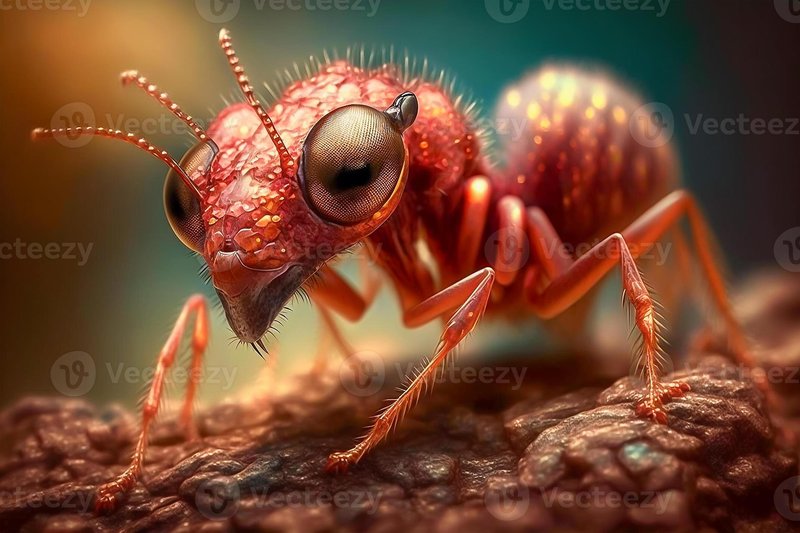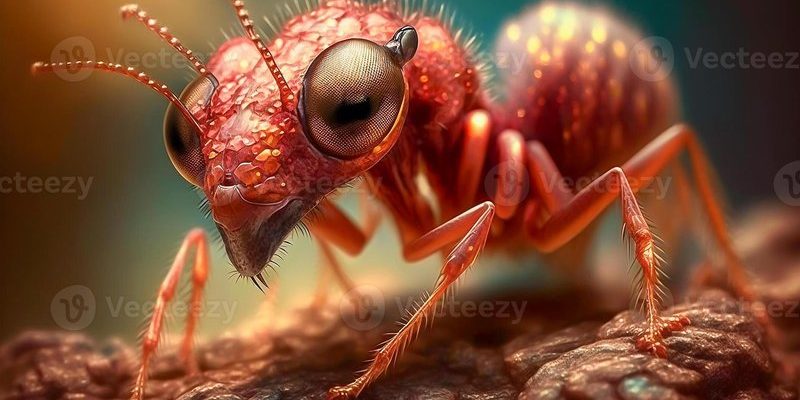
Imagine stepping barefoot onto a patch of grass, feeling the warm sun on your skin, and suddenly experiencing a sharp, burning sensation. You look down to see tiny, aggressive ants swarming over your foot. Congratulations, you’ve just encountered a fire ant. These little insects pack a punch, both in terms of their painful sting and their ability to create impressive colonies. Let’s dive into the fascinating world of fire ants and uncover what makes them tick.
Fire ants are more than just a nuisance; they’re remarkable creatures with complex social structures and behaviors. Recognized by their reddish-brown color and their infamous, painful sting, these ants are known for their resilience and adaptability. Fire ants can thrive in various environments, making them a common sight in many warmer regions. Whether you’re simply curious about them or looking to manage a fire ant problem, understanding their biology and behavior can be quite enlightening.
Classification and Species
Fire ants belong to the genus Solenopsis, which includes several species. The most notorious of these is the red imported fire ant (Solenopsis invicta), originally from South America but now widespread in the United States and beyond. Another common species is the southern fire ant (Solenopsis xyloni), primarily found in the southwestern U.S. and parts of Mexico. Each species has unique traits, yet they all share the common characteristic of being aggressive when their nests are disturbed.
You might wonder why they’re called “fire ants.” The name comes from the burning sensation of their sting, which contains venom that can cause painful welts. Interestingly, fire ants are not just named for their sting; they also exhibit fire-like behavior when defending their nests, swarming in unison to defend their territory. This behavior can be both fascinating and alarming for anyone who accidentally steps too close.
Physical Characteristics
Fire ants are small but mighty, usually ranging from 1/8 to 1/4 inch in length. Their bodies are segmented with a smooth surface and are typically reddish-brown. What makes them stand out is their pincers, or mandibles, which they use for defense and carrying food. Each ant has a stinger located on its abdomen, which delivers a painful venom when they feel threatened.
In terms of vision, fire ants have compound eyes that give them excellent vision for spotting predators and prey. They are fast movers, darting quickly to and from their nests, which can sometimes be seen as small mounds in the soil. When you look closely, you might notice tiny grains of dirt forming these mounds—it’s a testament to the hard work of thousands of fire ants!
Habitat and Distribution
Fire ants primarily thrive in warm, moist areas, making them common in southern regions of the United States, as well as Central and South America. They prefer open fields and sunny locations, which provide the warmth they need. You might find them around gardens, parks, and even agricultural areas, where they can build their nests underground or in above-ground mounds.
Interestingly, fire ants are known for their ability to form large colonies, sometimes containing thousands to millions of individual ants. These colonies can expand quickly, especially in nutrient-rich environments. Their adaptability is impressive; they can survive in various conditions, including urban settings. So, if you think you’re safe in your backyard, think again—fire ants might be creating a colony just beneath your feet.
Diet and Feeding Habits
Fire ants are omnivorous, which means they eat a variety of foods. Their diet mainly consists of proteins and sugars. They enjoy seeds, insects, and even small animals, which they can carry back to their nests. You might see them feasting on leftover food in picnic areas or swarming over a sugary soda spill—this is their sweet spot!
Fire ants have a unique way of foraging for food. They often engage in a behavior called “tandem running,” which involves one ant guiding another to a food source. This teamwork is essential for colony survival, as bringing food back to the nest ensures that all members are fed. Once they find food, fire ants communicate with pheromones, leading others to the source. This is why you might suddenly see a swarm of ants after you’ve dropped a crumb— they communicate efficiently to exploit food sources.
Reproduction and Lifespan
The life cycle of fire ants is fascinating and complex. Reproduction begins with a mating flight, where winged males and females leave their colonies to mate. After mating, females land, shed their wings, and search for a suitable place to start a new colony. This process typically happens during warmer months and can lead to rapid population growth in suitable environments.
Once a queen establishes a new colony, she begins laying eggs and caring for them until they hatch into larvae. The larvae eventually develop into workers, who take over the tasks of foraging and nest maintenance. The lifespan of fire ants varies significantly; workers can live for a few weeks to several months, while queens can live for several years, making them the heart of the colony.
Behavior and Communication
Fire ants are highly social insects, living in colonies that exhibit fascinating behaviors. They work together to build their nests, defend their territory, and find food. One remarkable aspect of their behavior is their ability to form rafts during floods. They link their bodies together to create a floating mass, which helps the colony survive temporary water inundations.
Communication plays a crucial role in the life of fire ants. They use pheromones to convey various messages, from alerting others about food sources to signaling danger. When a fire ant stings, it also releases alarm pheromones, prompting nearby ants to rally and defend the colony. This cooperative behavior is a defense mechanism, making it essential for their survival.
Managing Fire Ants
If fire ants have invaded your space, there are several steps you can take to manage them effectively. First, identify the nests—these are usually small mounds in open areas. It’s best to wear gloves and keep your distance; fire ants are aggressive defenders of their territory. Trapping and baiting are popular methods for managing these pests. You can purchase bait that the ants will carry back to their nest, effectively reducing their population.
Another effective approach is to maintain a clean environment. Fire ants are attracted to food scraps, so it’s essential to keep outdoor areas tidy. Make sure to store pet food and trash securely. You can also use barriers, like diatomaceous earth, which can deter ants from entering certain areas. However, it’s crucial to remember that fire ants can be resilient, and sometimes professional pest control services may be needed for substantial infestations.
Health Risks and Prevention
The sting of a fire ant is more than just annoying; it can pose health risks, especially for those allergic to their venom. The sting produces a painful, burning sensation and can lead to itchy welts. In some cases, severe reactions can occur, which may require medical attention. If you’ve been stung, washing the area with soap and water can reduce the risk of infection while applying ice can ease the pain.
Preventing fire ant stings begins with awareness. If you’re spending time in areas known for fire ants, such as parks or fields, it’s wise to wear shoes and long pants. If you stumble upon their nests, back away slowly, as disturbing them can provoke an aggressive response. Keeping an eye on food and drink outdoors is also vital; fire ants are attracted to sweet and greasy food, and if you leave snacks unattended, they’ll be quick to swarm.
Fire ants are remarkable yet aggressive creatures that play a fascinating role in their ecosystems. From their complex social structures to their unique behaviors, these ants are more than just pests. Understanding their habits and management techniques can help you coexist with them safely. Next time you come across one of their nests or feel that unmistakable sting, you’ll have a better appreciation for these tiny but mighty insects.
FAQ
What do fire ants look like?
Fire ants are typically reddish-brown in color and range from 1/8 to 1/4 inch in length. Their bodies are smooth, and they have a distinct stinger on their abdomen, which is used to deliver painful stings.
Where do fire ants build their nests?
Fire ants usually build their nests in open, sunny areas, often seen as small mounds of dirt. They prefer disturbed soils, making gardens, lawns, and agricultural fields common locations for their colonies.
How do fire ants communicate?
Fire ants communicate primarily through pheromones. They use these chemical signals to alert colony members about food sources, dangers, and other important messages, ensuring efficient cooperation among the colony.
Are fire ant stings dangerous?
While fire ant stings can cause painful welts and itching, they can be dangerous for individuals who are allergic to their venom. Severe allergic reactions may result in anaphylaxis, which requires immediate medical attention.
How can I prevent fire ants from invading my yard?
To prevent fire ants, maintain a clean outdoor environment by securing trash and pet food. Keeping your yard tidy will reduce the likelihood of attracting them. Using bait traps can also help control their population.
What should I do if I get stung by a fire ant?
If you’re stung by a fire ant, wash the area with soap and water to prevent infection. Applying ice can help reduce swelling and pain. If you experience severe reactions, seek medical help right away.
How long do fire ants live?
The lifespan of fire ants varies by caste. Worker ants usually live for several weeks to a few months, while queens can live for many years. This longevity is crucial for the colony’s survival and growth.
What do fire ants eat?
Fire ants are omnivorous and have a diverse diet that includes insects, seeds, and sugary substances. They are known to scavenge for food in human environments, often attracted to sweet or greasy food items.
Can fire ants be beneficial?
While often viewed as pests, fire ants can play beneficial roles in their ecosystems, such as aerating the soil and controlling pest populations. However, their aggressive nature can create conflicts with humans.
Is it safe to handle fire ants?
It is not safe to handle fire ants. They can be very aggressive when their nest is disturbed, and their stings can be quite painful. It’s best to observe them from a distance and avoid direct contact.
How can I get rid of fire ants naturally?
Natural methods for controlling fire ants include using diatomaceous earth or vinegar solutions. These can act as barriers or deterrents without harmful chemicals. However, results may vary, and persistence is key.
Can fire ants invade homes?
While fire ants prefer outdoor environments, they may invade homes in search of food. Keeping your home clean and sealing entry points can help minimize the chances of a fire ant infestation.

